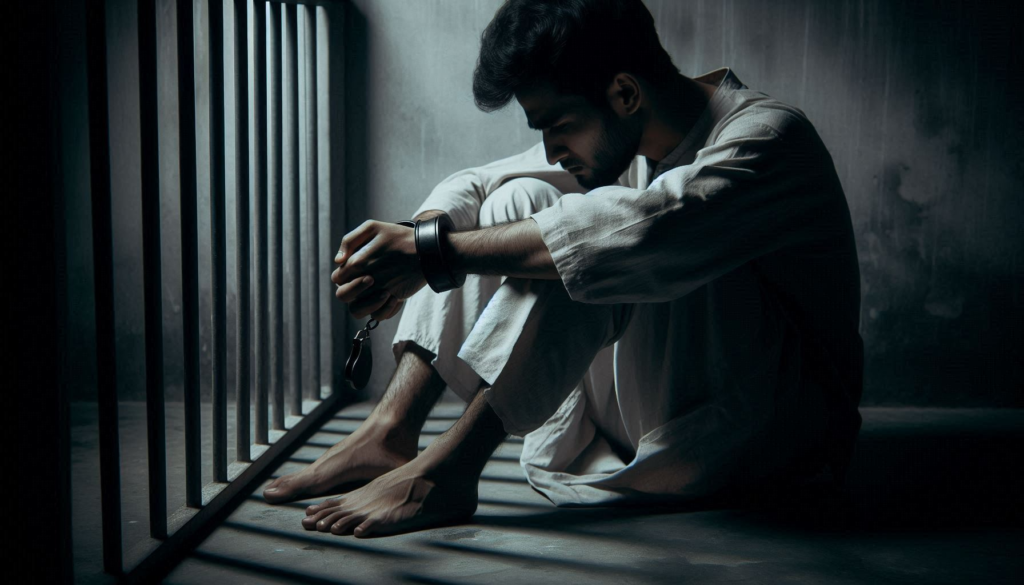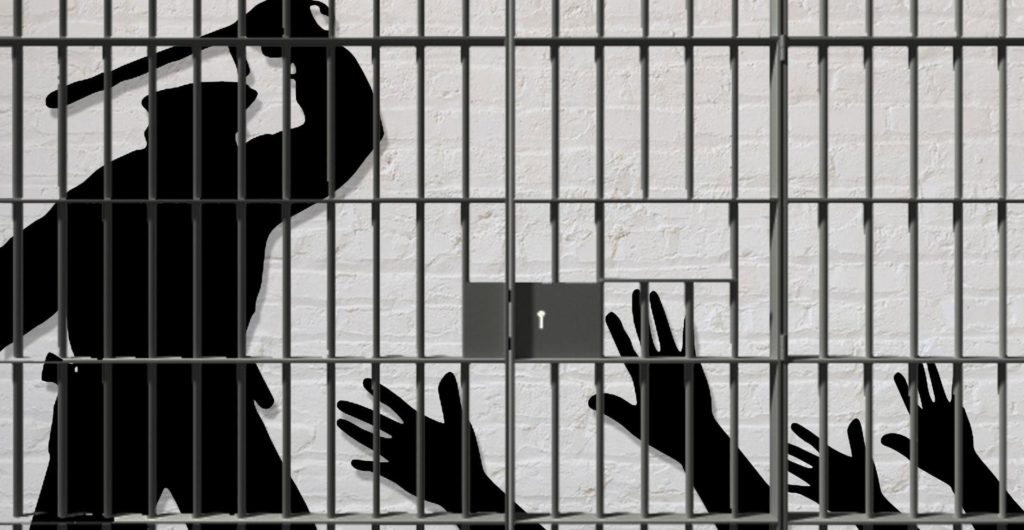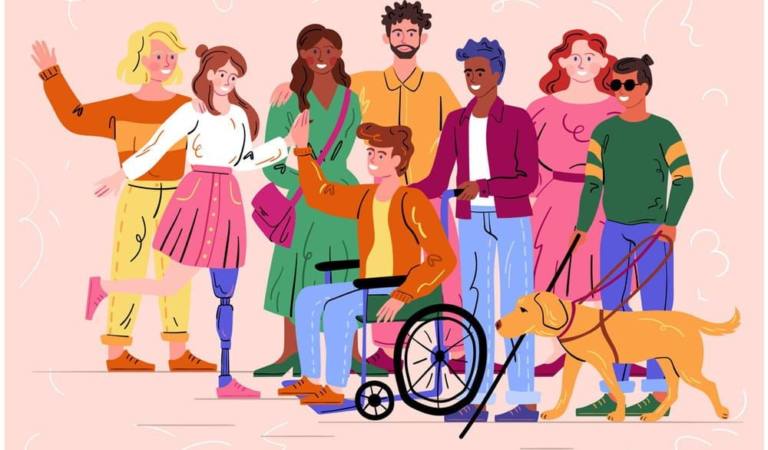
Abstract
The protection of human rights is a fundamental principle of justice, yet custodial settings often become sites of severe human rights violations. Custodial violence is a gross violation of human rights against humanity itself. The concept of custodial violence, how it affects human rights and the legal provisions in India to avoid custodial violence. Despite the existence of legal frameworks at both national and international levels, the persistence of these violations raises concerns about enforcement, judicial oversight, and police accountability. The paper also makes recommendations on reforms to help strengthen legal protections and accountability measures on the part of law enforcing entities.
Keywords
Custodial Violence, Torture, Human Rights, Police brutality, Preventive measures, etc.
Introduction
“Torture and custodial violence are among the most egregious violations of human dignity. They are not just methods of coercion; they are tools of oppression that undermine democracy itself. A society that turns a blind eye to torture is a society that allows the erosion of human values, the collapse of trust in justice, and the normalisation of inhumanity.”
— Kofi Annan, Former UN Secretary-General
Custodial violence refers to physical, psychological, and sexual abuse inflicted on individuals while in police or judicial custody. No person shall be deprived of is liberty except with authority of law. Police officials must act upon their limits inhuman act of custodial treatment must not be acted upon the arrestee even they right to dignified treatment under the law. Torturing a person who is both helpless and in No position to retaliate with the goal of extracting information is a rather reprehensible manner of investigation and crude way of detecting crime (Bhagwan Singh and another v. State of Punjab, 1992). It is a grave violation of human rights and a challenge to the justice system of any democracy. The use of torture, coercion, and unlawful detainment not only undermines the principles of justice but also erodes public trust in law enforcement agencies (United Nations, 1984).
Despite constitutional safeguards and judicial interventions, custodial violence remains prevalent in India. The National Crime Records Bureau (NCRB) has documented several cases of deaths and human rights abuses in police custody, highlighting the urgent need for legal and institutional reforms (National Crime Records Bureau, 2022). This paper examines the issue of custodial violence, its impact on human rights, the role of the judiciary in curbing it, and the preventive measures that can be taken to eliminate such practices.
Understanding Custodial Violence
Custodial violence manifests in various forms, including physical torture, psychological coercion, sexual abuse, and denial of basic necessities. It is often employed to extract confessions or intimidate detainees, violating their fundamental rights guaranteed under the Indian Constitution. Article 21 of the Constitution guarantees the right to life and personal liberty, which is frequently compromised in cases of custodial torture (Supreme Court of India, 2021).
The United Nations Convention Against Torture (UNCAT), which India has signed but not yet ratified, defines torture as any act that inflicts severe pain or suffering for purposes such as obtaining information or punishing an individual (United Nations, 1984). The absence of specific anti-torture legislation in India exacerbates the problem, allowing law enforcement officers to act with impunity.

Forms of Custodial Violence
- Physical Torture and Brutality
Detainees are often subjected to severe forms of physical abuse, including beatings electric shocks and other violent acts to extract confessions (Human Rights Watch, 2020). In the case of Munshi Singh Gautam v. State of M.P (2005), the Supreme Court of India observed the continued use of third degree methods like physical torture. This form of abuse violates Article 7 of the International Covenant on Civil and Political Rights (ICCPR, 1966), which prohibits torture and inhumane treatment
- Sexual Violence and Harassment
Sexual harassment in custody are severe violations of human rights, particularly against women and marginalised groups. Female detainees are vulnerable to sexual assault, including rape and other forms of coerced sexual acts by police officers. The Sheela Barse v. State of Maharashtra (1983) case highlighted the need for gender sensitive approaches, as women are disproportionately at risk. Such abuses violate both Article 5 of the Universal Declaration of Human Rights (1948) and Article 7 of the United Nations Convention against Torture (1984), both of which prohibit torture and degrading treatment
- Custodial Deaths and Extra Judicial Killings
Many detainees die while in custody, often because of torture, medical neglect, or in some cases, extra judicial killings. The National Crime Bureau (2022) reports that over 100 custodial deaths are recorded every year in India. Main reasons for these custodial deaths in India are:
- Police brutality: Some police officers resort to physical violence during interrogation or to punish suspects, leading to serious injuries that can be fatal.
- Lack of accountability: A system where police officers often face minimal consequences for custodial deaths, even when evidence exists, encourages a culture of impunity.
- Poor medical care: Failure to provide timely medical attention to detainees with pre-existing health conditions or injuries sustained in custody can lead to death.
- Overcrowded lockups: Poor conditions in police lockups with overcrowding and inadequate sanitation can contribute to health complications and deaths.
- Lack of proper investigation: Often, investigations into custodial deaths are not conducted thoroughly, with evidence being tampered with or crucial details ignored.
- Denial of Basic Rights
Detainees are many times denied of rights like legal counsel, medical care, and communication with family, worsening their suffering (D.K. Basu v. State of West Bengal, 1997). Such denial directly contravenes Article 9 and 10 of the ICCPR, which guarantees the right to legal assistance and fair treatment during detention
Judicial Responses
Sube Singh v. State of Haryana and Ors.
One of the most significant cases concerning custodial violence and human rights in India is Sube Singh v. State of Haryana and Ors. (2006). In this case, Sube Singh alleged that he was subjected to police torture in Haryana to force a confession and sought monetary compensation for the violation of his Article 21 right. The Supreme Court of India examined the issue of custodial violence and emphasised the need for accountability and compensation for victims. The Court acknowledged the recurring instances of police brutality and stressed that state authorities must be held responsible for violations of fundamental rights (Supreme Court of India, 2006).
The judgment reinforced the importance of upholding human dignity and preventing inhumane treatment of detainees. It also underscored the necessity of judicial oversight to curb arbitrary actions by law enforcement officials (Supreme Court of India, 2006).
This case set a precedent that compensation is not a routine remedy for custodial violence and that the judicial caution is necessary in such claims. The ruling also underscored the need for stronger legal frameworks and strict police accountability to prevent human rights abuses in custody.
State of U.P v. Ram Sagar Yadav, 1985
A farmer falsely accused of cattle trespass by his neighbour over a dispute was allegedly threatened for bribes by the concerned police officer, who then, at first, relented but then reported this incident to the police station, which as a response appointed another officer to inquire into the farmer’s allegation against the officer. The police officer in charge of the inquiry arrested the farmer and tortured him severely; within 6 hours of registering the initial case, the farmer then succumbed to his injuries and died. This matter was then taken up by the Apex court, which then acknowledged the advent of custodial death and torture as well as the indemnity enjoyed by police officials, saying, “Police officers alone and none else can give evidence regarding the circumstances in which a person in their custody comes to receive injuries. Bound by the ties of brotherhood, they often prefer to remain silent in such situations, and when they choose to speak, they put their own gloss upon facts and pervert the truth.” (Supreme Court of India, 1985).

Human Rights Violations in Custody
Custodial violence directly contradicts several human rights principles, including the right to dignity, freedom from torture, and the right to a fair trial (United Nations, 1984). The United Nations Human Rights Council has consistently condemned the use of torture and arbitrary detention. In India, the National Human Rights Commission (NHRC) plays a crucial role in investigating cases of custodial deaths and torture. However, its recommendations often lack enforcement mechanisms (National Crime Records Bureau, 2022).
According to NCRB data, a significant number of custodial deaths are reported annually, yet only a small percentage result in convictions. The reluctance of authorities to prosecute police officials accused of custodial violence perpetuates a culture of impunity (National Crime Records Bureau, 2022).
Preventive Measures and Recommendations
Custodial violence is a heinous act which includes physical, mental, sexual harassment and fake encounters. This violate the human dignity which is mandated by the most prestigious statute book of our nation. Strict implementation of guidelines mandated under D. K Basu judgment must be practised. Prevention of Torture Bill, 2010 must be enacted with provisions for granting compensation for torture victims and proper authority to investigate complaints of torture must be inserted. To curb custodial violence, the government must implement stringent legal and institutional reforms. Some of the key measures that can be taken include:
- Enactment of Anti-Torture Legislation: India must ratify the UNCAT and introduce a comprehensive anti-torture law that explicitly criminalizes custodial violence and prescribes strict penalties for violators (United Nations, 1984).
- Strict Enforcement of Existing Laws: The Supreme Court has laid down guidelines in cases like D.K. Basu v. State of West Bengal (1997), mandating procedural safeguards during arrests. These guidelines must be strictly implemented, with non-compliance leading to legal consequences (Basu, 1997).
- Independent Oversight Mechanism: Establishing independent oversight bodies, such as an autonomous commission for custodial violence, can ensure transparency and accountability. These bodies should have the power to conduct surprise inspections of police stations and detention centers (Supreme Court of India, 2021).
- Training and Sensitisation of Law Enforcement: Policemen and prison officials should undergo regular training on human rights and ethical interrogation techniques to reduce the reliance on coercive methods (United Nations, 1984).
- Use of Technology: Installing CCTV cameras in police stations and detention facilities can act as a deterrent against custodial violence. Strict penalties should be imposed for tampering with or disabling surveillance equipment (National Crime Records Bureau, 2022).
- Legal Aid and Awareness Programs: Providing free legal aid to detainees and raising public awareness about their rights can help prevent instances of abuse. NGOs and human rights organizations should play an active role in advocating for victims of custodial violence (Supreme Court of India, 2021).
- Holding Officials Accountable: Officers found guilty of custodial violence should face strict legal and departmental actions, including dismissal from service and criminal prosecution (National Crime Records Bureau, 2022).
Conclusion
Custodial violence remains a significant human rights challenge in India, undermining the principles of justice and democracy. Despite constitutional safeguards and judicial pronouncements, the lack of strict enforcement and accountability allows such practices to continue. By enacting robust anti-torture laws, ensuring independent oversight, leveraging technology, and fostering a culture of human rights awareness, the government can effectively reduce instances of custodial violence (United Nations, 1984).
Custodial violence is indeed a disgraceful act against humans. It has been used by people having authority to get what they want without considering the immense trauma the victim must face. Although international bodies and commissions have taken steps to curb this act, we are still far from our goal. In India, even though there are rights available to citizens, the cases of custodial violence keep on increasing. The Hon’ble Supreme Court has tried to fill the gap by pronouncing landmark judgements and laying down guidelines, but it still doesn’t seem enough. Some ways in which this problem could be solved further could be the enactment of the Prevention of Torture Bill, 2010, equipping officers with body cameras, physiological- physical-medical tests, and assessments of the investigating officers be undertaken every year, etc.
References
- Basu, D. K. (1997). D.K. Basu v. State of West Bengal, AIR 1997 SC 610.
- Bhagwan Singh and another v. State of Punjab, (1992) AIR 1689 SCR (3) 180.
- Sube Singh v. State of Haryana and Ors., (2006) AIR 1117.
- National Crime Records Bureau. (2022). Crime in India Report. Ministry of Home Affairs.
- United Nations. (1984). Convention Against Torture and Other Cruel, Inhuman or Degrading Treatment or Punishment.
- Supreme Court of India. (2021). Guidelines on Custodial Deaths. Judicial Commission Report.
- State of U.P v. Ram Sagar Yadav, (1985) AIR 416 SCR (2) 621.
- Human Rights Watch (2020). Police abuses and custodial torture in India.
- Munshi Singh Gautam v. State of M.P., (2005) 9 SCC 631
- International Covenant on Civil and Political Rights, 1966.
- National Crime Records Bureau. (2022). Crime in India: Custodial deaths and torture statistics. Government of India




